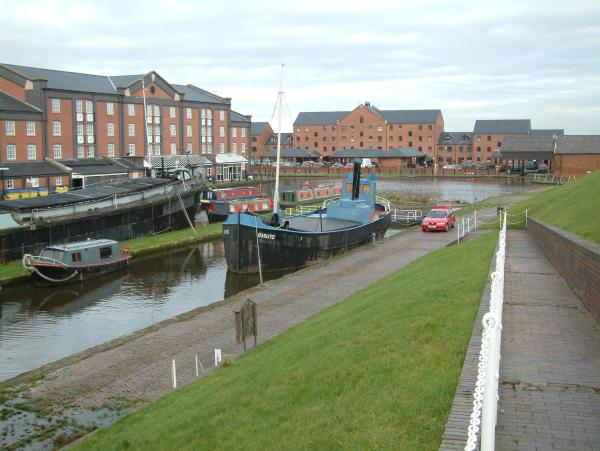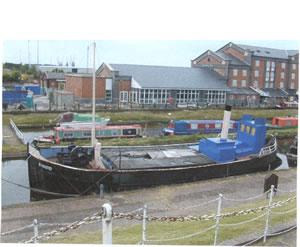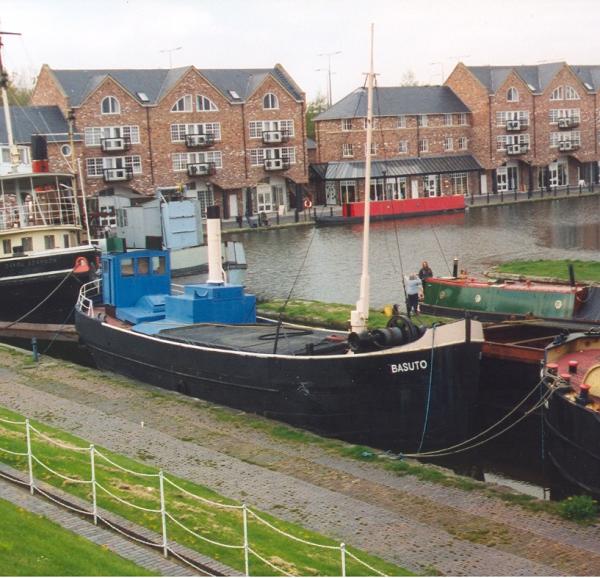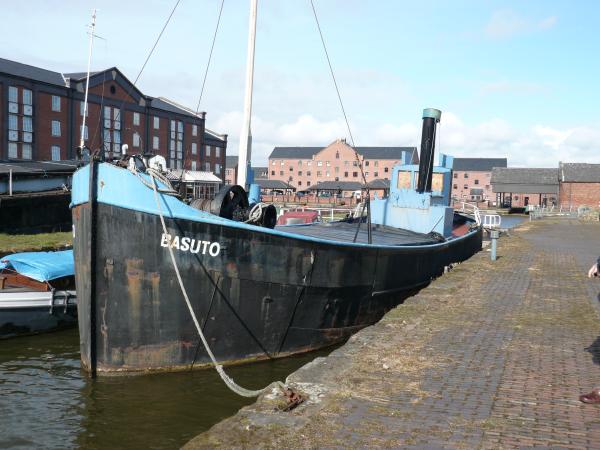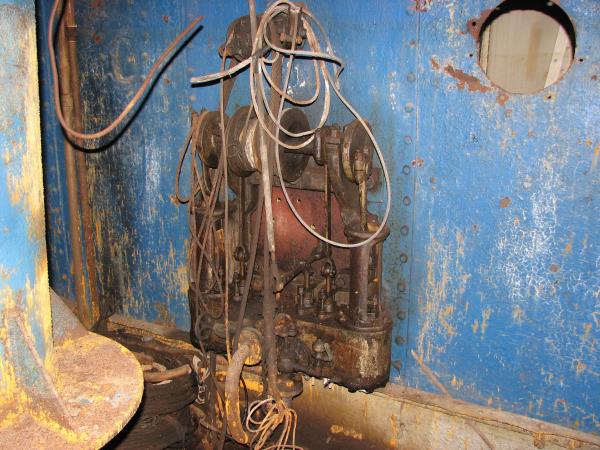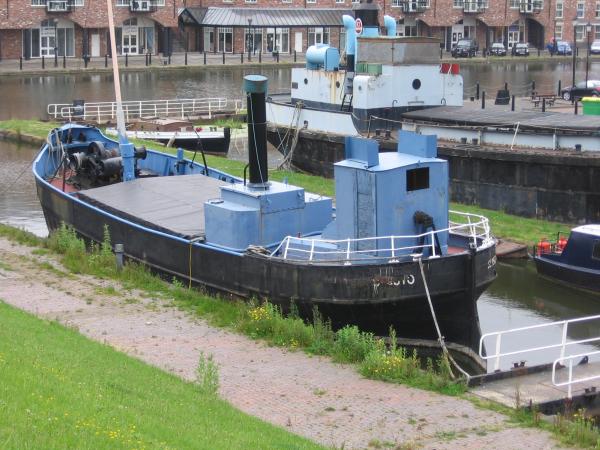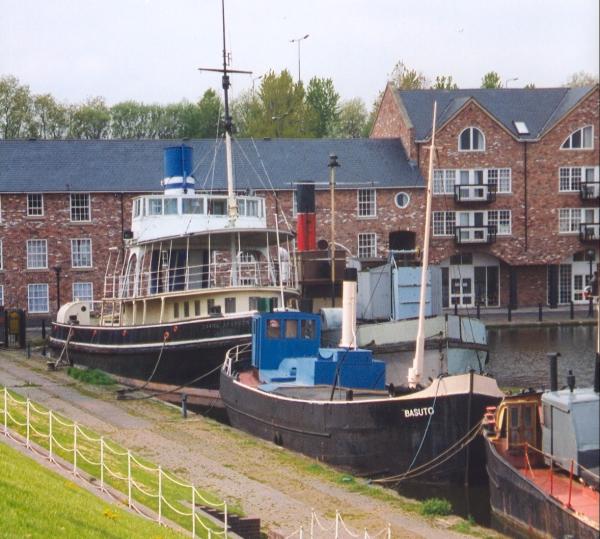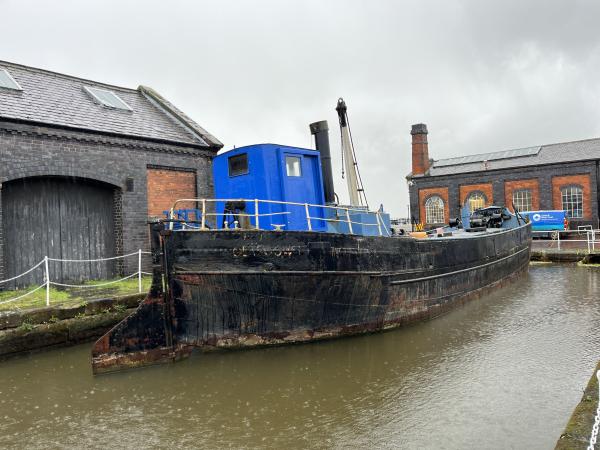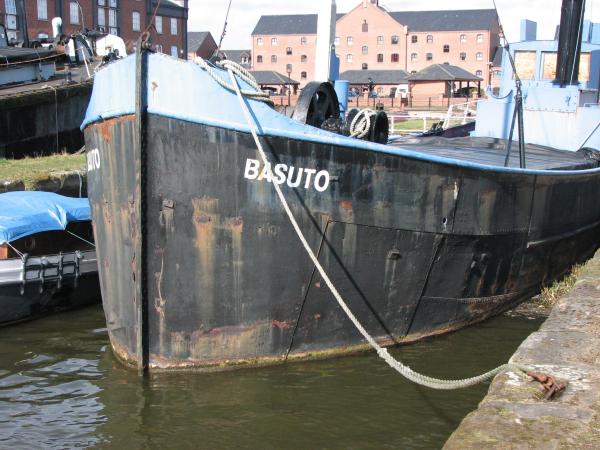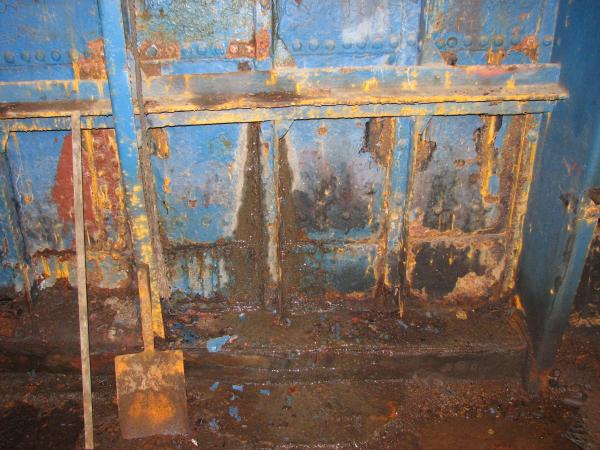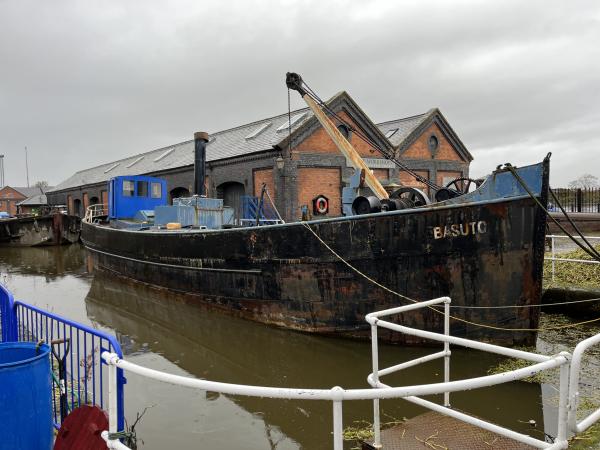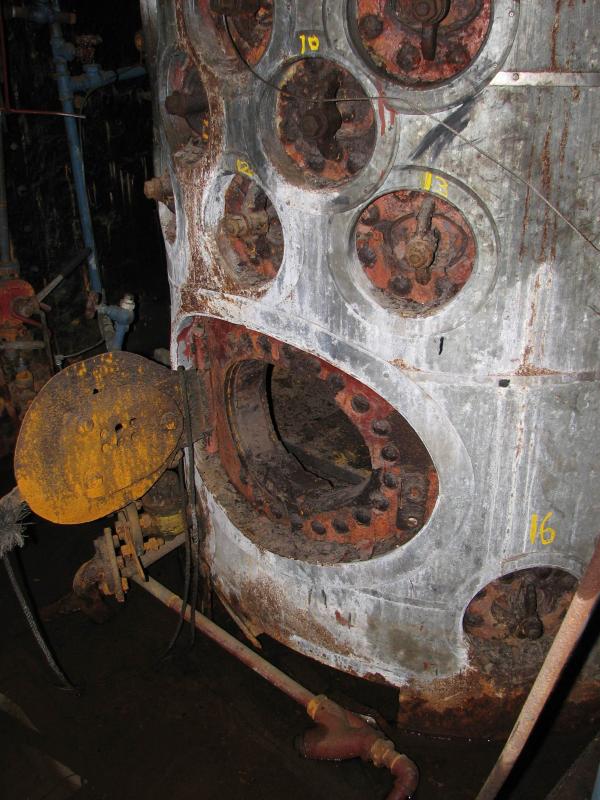

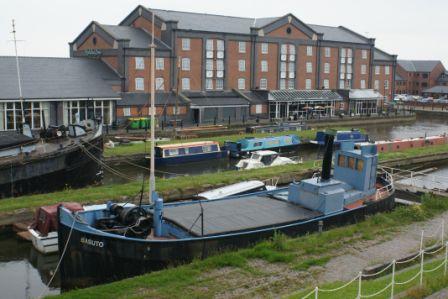
Details
Construction
Dimensions
History
A true Clyde puffer, BASUTO was built in 1902 of steel by William Jacks & Co., Port Dundas, Scotland, for that company's own use on the Firth & Clyde canal. In 1919, she was sold to J. Kelly & Co., Belfast, a coal-merchant. In the 1920s, she was acquired by Cooper & Sons, of Widnes, and was converted into a dumb barge to carry sand and gravel.
Later, she was purchased by the Manchester Dry Docks Ltd and was returned to steam with a new engine. Her boiler dates from 1961 and was manufacturerd by the Cradley Boiler Company. In 1981, she was acquired by the Boat Museum at Ellesmere Port and placed on display there.
Source: Paul Brown, Historic Ships The Survivors (Amberley, 2010), updated Feb 2011.
Significance
What is the vessel’s ability to demonstrate history in her physical fabric?
Built between 1856 and 1939 Clyde Puffers were originally limited to 66 feet in length overall to allow them to pass through the locks on the Forth and Clyde canal linking Edinburgh on the east coast with Glasgow on the west. Canal use dictated a shallow draft and flat bottom following on from the scow design of horse drawn barges which they replaced. Competition from the railways led to the need to replace horse-drawn barges with steam power, and hence the development of the Puffer.
BASUTO is a Clyde puffer whose steel hull is constructed of riveted plates whilst later models were welded. Much of her original hull and frames survive along with her forward bulkhead. During her early life she was stripped of her original engine and used as a dumb barge, so the current steam plant dates from 1928 with a newer boiler from the 1970s. Cargo handling equipment was also modified once she went into service in the Manchester Docks.
Whilst the basic hull shape remains as original it is thought that her bulwarks were raised in 1919 when she was sold to J. Kelly & Co., a Belfast coal merchant.
Puffers originally had an open helming position aft of the funnel. BASUTO, along with other vessels, had a wheelhouse added to provide protection especially as they started to be employed on coastal work beyond the canal.
The above-mentioned structural changes illustrate the three distinct phases of BASUTO’s life from a canal-based cargo vessel to a dumb coal / gravel barge, and finally to a dock supply/support vessel. No conservation or interventive work has been carried out since she was withdrawn from service.
What are the vessel’s associational links for which there is no physical evidence?
BASUTO was built by William Jacks & Co of Port Dundas for their own use to carry pig iron to foundries in the Falkirk area. Believed to be the last surviving Clyde Puffer built before the Second World War, she has a strong association with the Forth & Clyde Canal and the West Coast of Scotland where vessels of her type were the mainstay of coastal and island transport.
She played a role in both World Wars, spending a short time in Belfast during the First World War carrying coal on Admiralty contracts and then, in the Second World War carrying armaments to a 60-ton crane, sometimes working 24 hours a day. In addition to her direct war work, the Clyde Puffer design was used as the basis for the large-scale victualling inshore craft (VIC) construction program that saw these vessels adopted around the coasts and naval bases of the UK during the 1939-1945 conflict.
BASUTO has clear regional links to the Manchester area where she worked in the Docks for fifty years carrying tools and equipment to ships under repair. After being transferred into the ownership of the Northwest Museum of Inland Navigation in 1981, she took on a public role and was steamed extensively around the Mersey region.
BASUTO is representative of an evolution in design, from the origins of the Clyde Puffer driven by the need to ensure canal transport could compete with the railways, through both World Wars, the transition from steam to diesel power plants, and the rise of the motor coastal vessels, up to their eventual replacement by road transportation. At only 66ft in length, and with very basic provision for the crew, BASUTO also provides an insight into the working environment of merchant seaman pre-World War Two as sail gave way to steam.
Clyde Puffers have become famous thanks to the writing of Neil Munro. First published in the Glasgow Evening News in 1905, his humorous stories of puffer VITAL SPARK and her skipper Para Handy were later introduced to a broader audience when produced as a book and released as a film and TV series.
BASUTO was recorded on the National Register of Historic Vessels in 1996 and given the status of inclusion on the National Historic Fleet.
How does the vessel’s shape or form combine and contribute to her function?
BASUTO’s hull shape and overall appearance are typical of the early puffer. Her fore end shape with its straight stem reflects the design from the horse-drawn canal era with a compromise between ease of movement through the water and maximizing cargo carrying capacity. Her riveted hull construction was common in iron vessels of the time prior to welded fabrication becoming normal practice. Powered by a non-condensing steam engine, she would have emitted the characteristic puffing sound which gave these vessels their name.
The large hold opening gives excellent access to all parts of the cargo, and the wheelhouse is of minimum size to give weather protection for the helmsman. The engine is located aft with a vertically mounted boiler to maximise cargo space and the stern hung rudder could be turned through 90 degrees, reducing the overall length of the boat and making it easier to clear canal locks. She retains elements illustrating the change of use from canal cargo vessel to dumb lighter and then dock workboat.
Today, BASUTO remains in the Manchester area where she spent so much of her working life and is moored as a floating exhibit in static preservation at the National Waterways Museum. Whilst no longer in steam, she retains an early steam plant and boiler along with associated deck handling equipment, including mast, derrick and foredeck winch.
She is instantly recognizable as a Clyde Puffer, a diminutive steamship with clear aesthetical appeal.
Sources:
Information provided by staff at the National Waterways Museum
Clyde Maritime Puffers and VIC’s web site:
https://clydemaritime.co.uk/puffersandvics/index.htm
Wikipedia – Clyde Puffer https://en.wikipedia.org/wiki/Clyde_puffer
Author:
CRT / National Historic Ships – May 2023
Key dates
- 1902 Built in Port Dundas as a Clyde puffer
- 1902-1919 Worked on the Forth and Clyde canal
- 1919 Bought by a Belfast coal merchant to carry coal
- 1920s Acquired by merchant in Widnes and converted to a Dumb Barge to carry sand and gravel
- Date unknown Bought by Manchester Dry Docks and returned to steam
- 1981 Acquired by the Boat Museum, Ellesmere Port
Sources
Brouwer, Norman J, International Register of Historic Ships, Anthony Nelson, pp136, Edition 2, 1993
Steamboat Register: An illustrated Register of surviving steam vessels in the British Isles, Steam Boat Association of Great Britain, Edition 6, May 1994
The Boat Museum,The Boat Museum
Waterways World, March 1975
Own this vessel?
If you are the owner of this vessel and would like to provide more details or updated information, please contact info@nationalhistoricships.org.uk

